Christopher Lin Talbot
age ~76
from San Bruno, CA
- Also known as:
-
- Christopher L Talbot
Christopher Talbot Phones & Addresses
- San Bruno, CA
- Atlanta, GA
- Foster City, CA
- Alexandria, VA
- Chantilly, VA
- South San Francisco, CA
Work
-
Company:Bayside mobile medical serviceMay 2011
-
Position:Mobile technician
Education
-
School / High School:Kaplan UniversityNov 2010
-
Specialities:medical
Skills
epic and sunquest systems
Resumes

Awesome Game Developer
view sourcePosition:
Senior Software Engineer at Zynga
Location:
San Francisco Bay Area
Industry:
Computer Games
Work:
Zynga since Oct 2009
Senior Software Engineer
Mindfuse Games Feb 2009 - Oct 2009
Lead Software Engineer
Arcadia Entertainment Apr 2008 - Jan 2009
Senior Software Engineer
Super Ego Games Sep 2007 - Feb 2008
Episode Director
Factor 5 Jul 2006 - Sep 2007
Software Engineer
Senior Software Engineer
Mindfuse Games Feb 2009 - Oct 2009
Lead Software Engineer
Arcadia Entertainment Apr 2008 - Jan 2009
Senior Software Engineer
Super Ego Games Sep 2007 - Feb 2008
Episode Director
Factor 5 Jul 2006 - Sep 2007
Software Engineer
Education:
Full Sail University 2003 - 2005
Game Design and Development Eastman School of Music 2001 - 2002
Classical Piano
Game Design and Development Eastman School of Music 2001 - 2002
Classical Piano

Christopher Talbot
view sourceLocation:
San Francisco Bay Area
Industry:
Electrical/Electronic Manufacturing

At Alta Bates Summit Medical Center
view sourceLocation:
San Francisco Bay Area
Industry:
Hospital & Health Care

Christopher Talbot Seattle, WA
view sourceWork:
Bayside Mobile Medical Service
May 2011 to Feb 2015
Mobile Technician Alta Bates Summit Medical Center
Oakland, CA
Jul 2009 to Mar 2011
Laboratory Assistant/Phlebotomist California Pacific Medical Center
San Francisco, CA
Oct 2008 to Apr 2009
Laboratory Assistant Univ. of California
San Francisco, CA
Jun 2008 to Oct 2008
Hospital Lab Technician Univ. of Washington Roosevelt Clinic/Univ. of Washington Medical Center
Seattle, WA
Oct 2003 to Mar 2008
Clinical Laboratory Technician Univ. of Washington Roosevelt Clinic/Univ. of Washington Medical Center
Kent, WA
Mar 2004 to Feb 2005
Patient Service Technician
May 2011 to Feb 2015
Mobile Technician Alta Bates Summit Medical Center
Oakland, CA
Jul 2009 to Mar 2011
Laboratory Assistant/Phlebotomist California Pacific Medical Center
San Francisco, CA
Oct 2008 to Apr 2009
Laboratory Assistant Univ. of California
San Francisco, CA
Jun 2008 to Oct 2008
Hospital Lab Technician Univ. of Washington Roosevelt Clinic/Univ. of Washington Medical Center
Seattle, WA
Oct 2003 to Mar 2008
Clinical Laboratory Technician Univ. of Washington Roosevelt Clinic/Univ. of Washington Medical Center
Kent, WA
Mar 2004 to Feb 2005
Patient Service Technician
Education:
Kaplan University
Nov 2010
medical Puget Sound Blood Center
Tukwila, WA
Aug 2003 to Sep 2003 Seattle Vocational Institute
Apr 2003 to Jul 2003
Vocational in Phlebotomy training State University of New York at Oswego Oswego
Oswego, NY
1982
B.A. in Communications
Nov 2010
medical Puget Sound Blood Center
Tukwila, WA
Aug 2003 to Sep 2003 Seattle Vocational Institute
Apr 2003 to Jul 2003
Vocational in Phlebotomy training State University of New York at Oswego Oswego
Oswego, NY
1982
B.A. in Communications
Skills:
epic and sunquest systems

Director, School Of Art At Stephen F. Austin State University
view sourcePosition:
Director, School of Art at Stephen F. Austin State University, Associate Professor at Stephen F. Austin State University
Location:
Nacogdoches, Texas
Industry:
Higher Education
Work:
Stephen F. Austin State University - Nacogdoches, TX since 2012
Director, School of Art
Stephen F. Austin State University since 2004
Associate Professor
Que Imaging 2001 - 2004
Photo Lab Tech
University of Houston 2001 - 2004
Graduate Assistant
Equity American School 1996 - 2000
High School Principal
Director, School of Art
Stephen F. Austin State University since 2004
Associate Professor
Que Imaging 2001 - 2004
Photo Lab Tech
University of Houston 2001 - 2004
Graduate Assistant
Equity American School 1996 - 2000
High School Principal
Education:
University of Houston 2001 - 2004
MFA, Photography and Digital Media Brigham Young University 1989 - 1995
BFA, Photography
MFA, Photography and Digital Media Brigham Young University 1989 - 1995
BFA, Photography
Skills:
Higher Education
Us Patents
-
Methods And Apparatus For Testing Semiconductor And Integrated Circuit Structures
view source -
US Patent:6504393, Jan 7, 2003
-
Filed:Jul 15, 1997
-
Appl. No.:08/892734
-
Inventors:Chiwoei Wayne Lo - Campbell CA
Mariel Stoops - Santa Clara CA
Christopher Graham Talbot - Menlo Park CA -
Assignee:Applied Materials, Inc. - Santa Clara CA
-
International Classification:G01R 3126
-
US Classification:324765, 324751, 250310
-
Abstract:A method of testing a semiconductor structure such as a finished or part-finished semiconductor wafer, a die on such a wafer, part of such a die, or even one functional element (e. g. a transistor or memory cell) of such a die. The method includes the steps of charging at least a part of the semiconductor structure; applying an electric field perpendicular to a surface of the structure while charging so as to determine charging potential and polarity (i. e. charging either positively or negatively); interrogating the structure including the charged part with a charged particle beam, such as an electron beam, so as to obtain voltage contrast data for the structure; and analyzing the data to determine the functionality of the element. Apparatus according to the invention for testing semiconductor structures, includes: a system for applying charge to at least part of the semiconductor structure, such as an electron beam, flood gun or mechanical probe; an electric field generator, typically an electrode spaced from the surface of the structure, which applies an electric field perpendicular to a surface of the structure so as to determine the potential and polarity of the charge applied to the element (i. e. positive or negative charge); a charged particle beam device such as an electron beam for interrogating the charged element; and a detector such as a secondary electron detector which obtains voltage contrast data from the structure on interrogation with the charged particle beam.
-
Apparatus For Detecting Defects In Patterned Substrates
view source -
US Patent:6509750, Jan 21, 2003
-
Filed:Apr 30, 2001
-
Appl. No.:09/846487
-
Inventors:Christopher G. Talbot - Emerald Hills CA
Chiwoei Wayne Lo - Campbell CA -
Assignee:Applied Materials, Inc. - Santa Clara CA
-
International Classification:G01R 31302
-
US Classification:324750
-
Abstract:Defects in a patterned substrate are detected by positioning a charged-particle-beam optical column relative to a patterned substrate, the charged-particle imaging system having a field of view (FOV) with a substantially uniform resolution over the FOV; operating the charged-particle-beam optical column to acquire images over multiple subareas of the patterned substrate lying within the FOV by scanning a charged-particle beam over the patterned substrate while maintaining the charged-particle-beam optical column fixed relative to the patterned substrate; and comparing the acquired images to a reference to identify defects in the patterned substrate. The use of a large-FOV imaging system with substantially uniform resolution over the FOV allows acquisition of images over a wide area of the patterned substrate without requiring mechanical stage moves, thereby reducing the time overhead associated with mechanical stage moves. Multiple columns can be ganged together to further improve throughput.
-
Through-The-Substrate Investigation Of Flip-Chip Ics
view source -
US Patent:6518571, Feb 11, 2003
-
Filed:Feb 10, 2001
-
Appl. No.:09/781488
-
Inventors:Christopher Graham Talbot - Menlo Park CA
James Henry Brown - San Jose CA -
Assignee:Schlumberger Technologies, Inc. - San Jose CA
-
International Classification:H01J 3730
-
US Classification:250307, 250309, 2504911, 25049221
-
Abstract:Methods are provided for exposing a selected feature of an IC device, such as a selected conductor, from the back side of the substrate without disturbing adjacent features of the device, such as active regions. One such method comprises: (a) determining a region of the IC device in which the selected feature is located; (b) acquiring from the back side of the substrate an IR optical microscope image of the region; (c) aligning the IR optical microscope image with a coordinate system of a milling system; and (d) using structures visible in the IR optical microscope image as a guide, operating the milling system to expose the selected feature from the back side of the IC device without disturbing adjacent features.
-
Feature-Based Defect Detection
view source -
US Patent:6539106, Mar 25, 2003
-
Filed:Jan 8, 1999
-
Appl. No.:09/227747
-
Inventors:Harry S. Gallarda - Mountain View CA
Chiwoei Wayne Lo - Campbell CA
Adam Rhoads - San Ramon CA
Christopher G. Talbot - Emerald Hills CA -
Assignee:Applied Materials, Inc. - Santa Clara CA
-
International Classification:G06K 946
-
US Classification:382149, 382286
-
Abstract:Methods and apparatus are provided for inspecting a patterned substrate, comprising: preparing a reference image and a test image, extracting features from the reference image and extracting features from the test image, matching features of the reference image and features of the test image; and comparing features of the reference image and of the test image to identify defects. Embodiments include apparatus for inspecting patterned substrates, computer-readable media containing instructions for controlling a system having a processor for inspecting patterned substrates, and computer program products comprising a computer usable media having computer-readable program code embodied therein for controlling a system for inspecting patterned substrates. The images can be electron-beam voltage-contrast images.
-
Detection Of Defects In Patterned Substrates
view source -
US Patent:6914441, Jul 5, 2005
-
Filed:Apr 29, 2002
-
Appl. No.:10/134210
-
Inventors:Christopher G. Talbot - Emerald Hills CA, US
Chiwoei Wayne Lo - Campbell CA, US -
Assignee:Applied Materials, Inc. - Santa Clara CA
-
International Classification:G01R031/302
G01N023/00 -
US Classification:324750, 250310
-
Abstract:One embodiment of the present invention is a method of detecting defects in a patterned substrate, including: (a) positioning a charged-particle-beam optical column relative to a patterned substrate, the charged-particle-beam optical column having a field of view (FOV) with a substantially uniform resolution over the FOV; (b) operating the charged-particle-beam optical column to acquire images of a region of the patterned substrate lying within the FOV by scanning the charged-particle beam over the patterned substrate; and (c) comparing the acquired images to a reference to identify defects in the patterned substrate.
-
Detection Of Defects In Patterned Substrates
view source -
US Patent:7253645, Aug 7, 2007
-
Filed:Feb 28, 2005
-
Appl. No.:11/069491
-
Inventors:Christopher G. Talbot - Emerald Hills CA, US
Chiwoei Wayne Lo - Campbell CA, US -
Assignee:Applied Materials, Inc. - Santa Clara CA
-
International Classification:G01R 31/305
G01R 31/02
G01N 23/22 -
US Classification:324751, 324750, 324753, 250310
-
Abstract:A method of detecting defects in a patterned substrate includes positioning a charged-particle-beam optical column relative to a patterned substrate, the charged-particle-beam optical column having a field of view (FOV) with a substantially uniform resolution over the FOV; operating the charged-particle-beam optical column to acquire images of a region of the patterned substrate lying within the FOV by scanning the charged-particle beam over the patterned substrate; and comparing the acquired images to a reference to identify defects in the patterned substrate.
-
High Current Electron Beam Inspection
view source -
US Patent:7602197, Oct 13, 2009
-
Filed:Jun 7, 2004
-
Appl. No.:10/560205
-
Inventors:Alexander Kadyshevitch - Modiin, IL
Dmitry Shur - Holon, IL
Christopher Talbot - Emerald Hills CA, US -
Assignee:Applied Materials, Israel, Ltd. - Rehovot
-
International Classification:G01R 31/00
G01R 31/307 -
US Classification:324751, 324501
-
Abstract:A method and apparatus for wafer inspection. The apparatus is capable of testing a sample having a first layer that is at least partly conductive and a second, dielectric layer formed over the first layer, following production of contact openings in the second layer, the apparatus includes: (i) an electron beam source adapted to direct a high current beam of charged particles to simultaneously irradiate a large number of contact openings at multiple locations distributed over an area of the sample; (ii) a current measuring device adapted to measure a specimen current flowing through the first layer in response to irradiation of the large number of contact openings at the multiple locations; and (iii) a controller adapted to provide an indication of the at least defective hole in response to the measurement.
-
Contact Opening Metrology
view source -
US Patent:20060113471, Jun 1, 2006
-
Filed:Jul 13, 2005
-
Appl. No.:11/181659
-
Inventors:Alexander Kadyshevitch - Hoddieen, IL
Christopher Talbot - Emerald Hills CA, US
Dmitry Shur - Holon, IL
Andreas Hegedus - Burlingame CA, US -
International Classification:G21K 7/00
-
US Classification:250310000
-
Abstract:A method for process monitoring includes receiving a sample having a first layer that is at least partially conductive and a second layer formed over the first layer, following production of contact openings in the second layer by an etch process, the contact openings including a plurality of test openings having different, respective transverse dimensions. A beam of charged particles is directed to irradiate the test openings. In response to the beam, at least one of a specimen current flowing through the first layer and a total yield of electrons emitted from a surface of the sample is measured, thus producing an etch indicator signal. The etch indicator signal is analyzed as a function of the transverse dimensions of the test openings so as to assess a characteristic of the etch process.
Classmates

Franklin County High Scho...
view sourceGraduates:
Chris Talbot (2002-2003),
Travis Hardesty (1996-2000),
Daniel Eckerle (1993-1997),
Teresa Banks (1986-1990),
Rachael Sudhoff (2003-2007)
Travis Hardesty (1996-2000),
Daniel Eckerle (1993-1997),
Teresa Banks (1986-1990),
Rachael Sudhoff (2003-2007)

Swannanoa High School, Sw...
view sourceGraduates:
Christopher Talbot (1978-1981),
Paul Brown (1979-1983),
Rodney Grant (1990-1994),
William Worley (1982-1986),
Patty Neamand (1961-1965)
Paul Brown (1979-1983),
Rodney Grant (1990-1994),
William Worley (1982-1986),
Patty Neamand (1961-1965)

Grapevine High School, Gr...
view sourceGraduates:
Chris Talbot (1979-1983),
Robert Otts (1982-1986),
Tameka Mitchell (1988-1992),
Robert Morgan (1986-1988),
John Albritton (1977-1981)
Robert Otts (1982-1986),
Tameka Mitchell (1988-1992),
Robert Morgan (1986-1988),
John Albritton (1977-1981)

West Lafayette High Schoo...
view sourceGraduates:
Chris Talbot (1998-2002),
Nora Crowley (1963-1967),
Hilmer Heineke (1985-1989),
John Gibson (1985-1989),
Brad Gilford (1989-1993),
Michael Sparby (1984-1988)
Nora Crowley (1963-1967),
Hilmer Heineke (1985-1989),
John Gibson (1985-1989),
Brad Gilford (1989-1993),
Michael Sparby (1984-1988)

Waterford Kettering High ...
view sourceGraduates:
Chris Talbot (1984-1988),
Mike Melkonian (1964-1968),
Brian Hund (1986-1990),
Cheryl Stephison (1962-1966),
Gerald Morrison (1983-1987)
Mike Melkonian (1964-1968),
Brian Hund (1986-1990),
Cheryl Stephison (1962-1966),
Gerald Morrison (1983-1987)

Pines Middle School, Pemb...
view sourceGraduates:
Chris Talbot (1995-1999),
Karen Fromberg (1989-1990),
Carlos Villatoro (1995-1999),
Sebastian Velasquez (1997-2001),
Lisa Thompson (1984-1986)
Karen Fromberg (1989-1990),
Carlos Villatoro (1995-1999),
Sebastian Velasquez (1997-2001),
Lisa Thompson (1984-1986)

Christopher Talbot
view source
Christopher Talbot Baldy
view source
Christopher Lawrence Talbot
view source
Christopher Talbot
view source
Chris Talbot
view source
Christopher Talbot
view source
Christopher Justin Talbot
view source
Christopher Talbot
view sourceMyspace
Youtube
Googleplus

Christopher Talbot
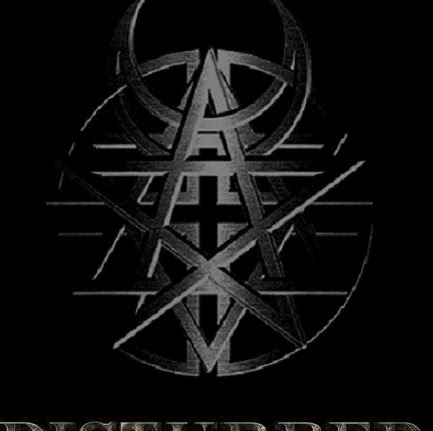
Christopher Talbot
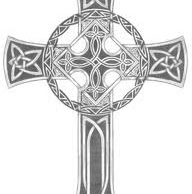
Christopher Talbot
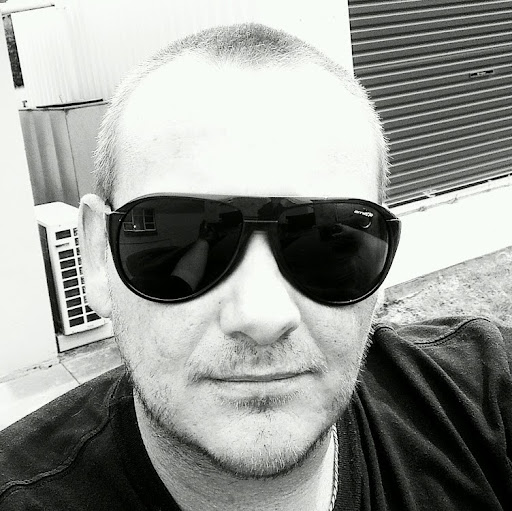
Christopher Talbot
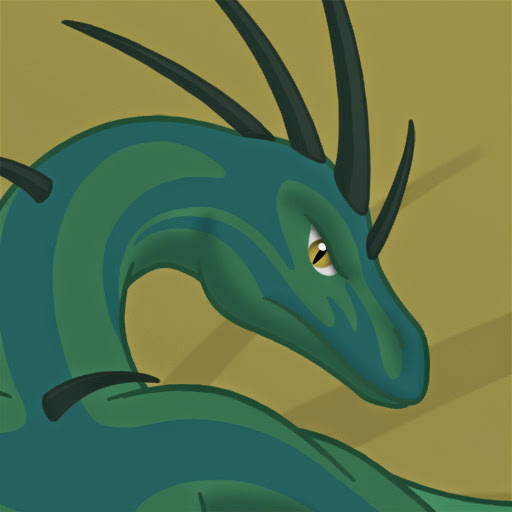
Christopher Talbot

Christopher Talbot

Christopher Talbot
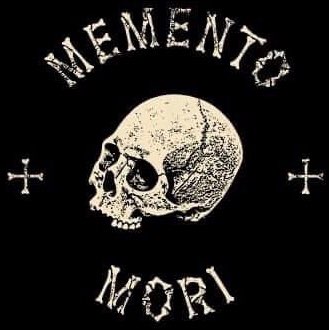
Christopher Talbot
Flickr
Get Report for Christopher Lin Talbot from San Bruno, CA, age ~76














